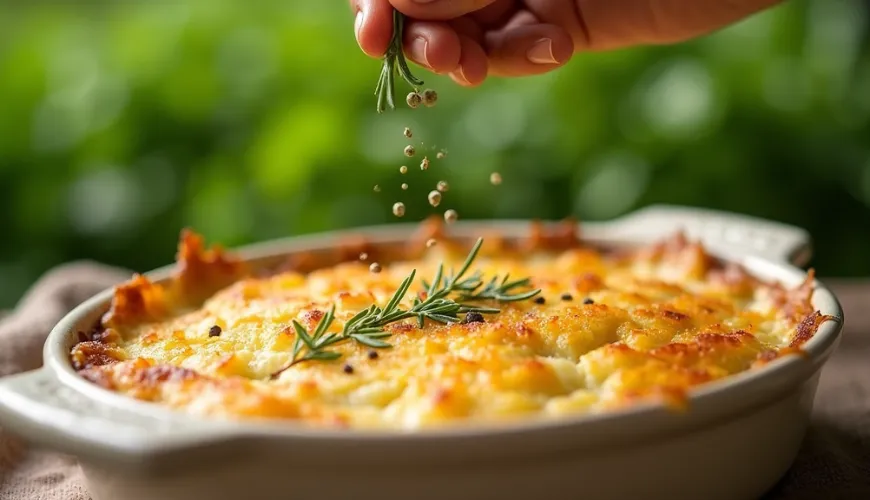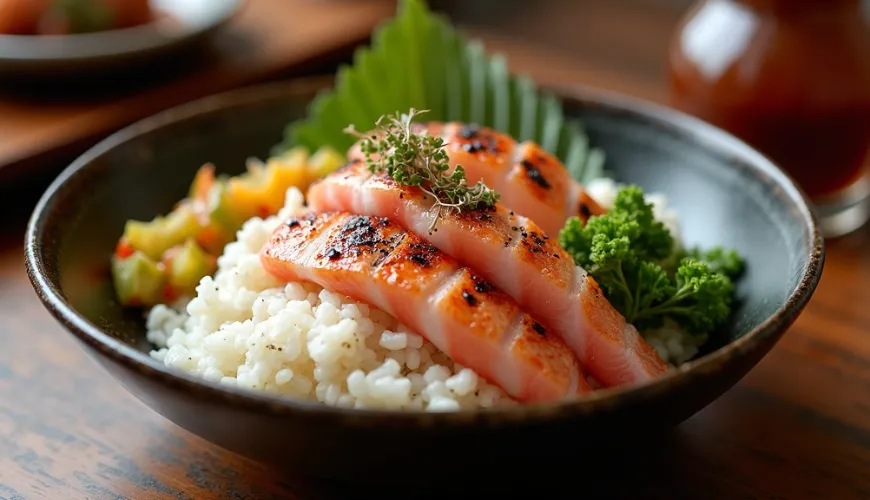
Discover the Magic of Gratinated Potatoes and Their Preparation

Gratinated Potatoes - A Crispy Classic That Never Disappoints
There are dishes that have the special ability to bring people together at the table. They aren't extravagant or complicated, but in their simplicity lies genuine magic. Gratinated potatoes are a prime example of such a dish—they perfectly complement a festive dinner or an ordinary family lunch. Even though almost everyone knows the recipe, few can describe why these potatoes are so irresistible. Perhaps it's the creamy texture, maybe the golden crispy crust. Or just the childhood memory of the unbeatable aroma wafting from the oven.
When you say classic gratinated potatoes, most of us imagine thin slices of potatoes baked with cream, sometimes with cheese, seasoned with garlic, salt, and nutmeg. The base is simple—quality potatoes, fat, and a bit of patience. It's in this simplicity that the potential for perfection lies.
A Traditional Recipe that Stood the Test of Time
The history of gratinated potatoes traces back to French cuisine, specifically the Dauphiné region, where they have been prepared under the name "Gratin Dauphinois" since the 18th century. Although every cook has their "secret trick," the basic recipe doesn't change much. Potatoes are sliced very thinly—ideally with a mandoline so that all slices are the same thickness. They are then layered in a baking dish, with cream or milk, and seasoned with salt, pepper, and often garlic. They are baked slowly until they achieve a delicate, creamy texture and the top layer becomes beautifully golden.
Some chefs add grated hard cheese, such as Gruyère or Parmesan, others add onions, herbs, or even a bit of white wine. Nevertheless, the basic recipe for gratinated potatoes remains true to tradition—minimal ingredients, maximum flavor.
How to Choose the Right Potatoes?
It might sound like a detail, but choosing the right type of potatoes makes a huge difference. For gratinating, potatoes with a higher starch content—like type C—are best. These soften nicely during baking and help create a creamy consistency without the need to add flour or thickeners. Conversely, waxy potatoes, used in salads, remain too firm and the result won't be as delicious.
An example could be a simple experiment by a home cook who decided to use different varieties when preparing gratinated potatoes—using type B for one half and type C for the other. The result was clear: the type C half was significantly creamier and tastier, while the other half remained a bit dry and separated. Such an experience confirms that even a small detail can affect the entire dining experience.
The Beauty of Slow Baking
One of the keys to perfect gratinated potatoes is patience. Baking should occur at a lower temperature—ideally around 160–170 °C—and can take up to an hour and a half. During this time, the potatoes bake slowly, the cream absorbs, creating a soft, almost velvety texture. The surface layer then provides a contrast in the form of a crispy golden crust, which for many is the best part.
If baked at a higher temperature, it often happens that the top layer burns quickly while the bottom remains hard. Hence, experienced chefs recommend covering the gratin with foil during the first part of baking and uncovering it towards the end to allow the surface to brown nicely.
Why Are Gratinated Potatoes So Popular?
Everyone might answer this question a little differently. For some, it's the feeling of home, for others, an ideal side dish to meat or a standalone vegetarian meal. In many families, these potatoes are a staple for Sunday lunches or Christmas dinners. Their advantage is also that they can be easily prepared in larger quantities and reheated the next day, which is appreciated by anyone with a busy schedule.
Imagine a family lunch at a cottage—the smell of wood, the crackling of a stove, and the aroma of cream, garlic, and butter wafting from the oven. In such moments, gratinated potatoes show why they are among the most beloved dishes across generations. It's not just that they taste great, but also the atmosphere they can create.
Small Tricks for a Big Result
Even though gratinated potatoes are a classic, they can be easily enriched with new flavors or adapted according to the season. Several tips that will elevate your potatoes to a higher level:
- Pre-cooking potatoes in cream: If you're in a hurry, you can briefly cook the potatoes directly in cream with garlic and spices. Then simply pour them into a baking dish and finish in the oven.
- Using multiple types of cheese: A combination of Parmesan and mild Edam adds depth and cheesy richness to the dish.
- Herbs for aroma: Fresh thyme, rosemary, or even a bit of sage can beautifully scent the potatoes.
- Replacing part of the cream with a plant-based alternative: For a vegan version, you can use oat or almond cream, which surprisingly has a similar texture.
As French chef Raymond Blanc said: “You can tell a true chef by how they prepare potatoes." And gratinated potatoes are a beautiful example of how simple ingredients can create something extraordinary.
Sustainably and Deliciously
Nowadays, when more people strive to live sustainably and reduce waste, gratinated potatoes bring another bonus—they are perfect for using leftovers. Do you have leftover cheese at home that's not entirely fresh? Add it. Leftover vegetables in the fridge? Slice and mix them between the layers. This way, a traditional recipe can become a modern and sustainable dish.
Moreover, if you choose organic potatoes from the local market and cream from a local farmer, you'll support not only your health but also local agriculture and ethical production. Small changes in purchasing ingredients can lead to big results, not just on the plate but also for the planet.
Regardless of whether you decide to stick to tradition or allow room for creativity, gratinated potatoes deserve their place in our kitchens. They are proof that even the simplest dish can be the most delicious—when prepared with care, love, and quality ingredients.

